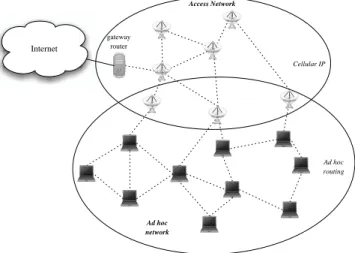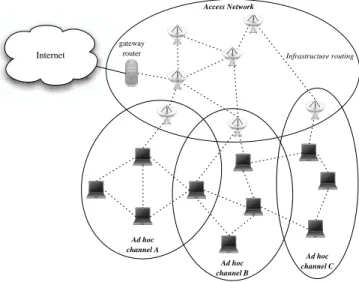Ad Hoc Mobility Notification in Wireless Infrastructure Networks
Texte intégral
Figure
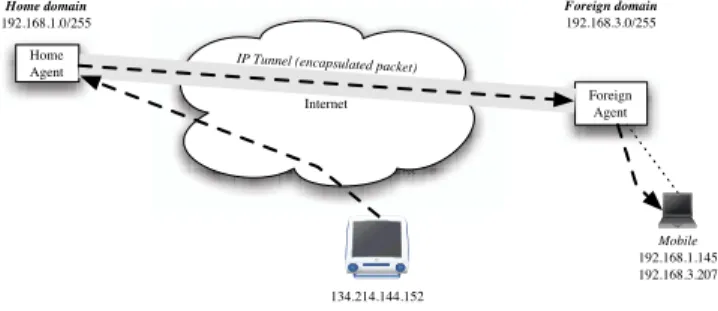
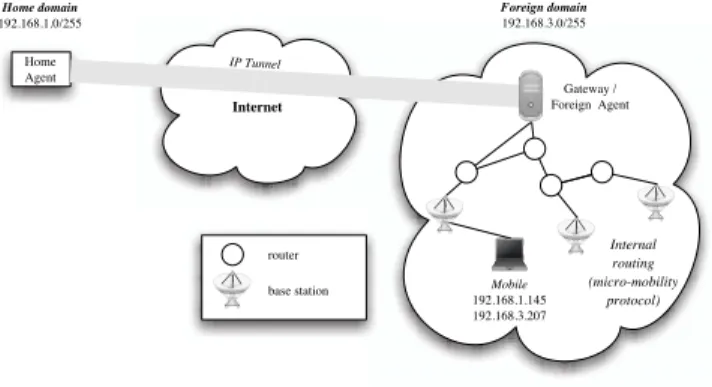
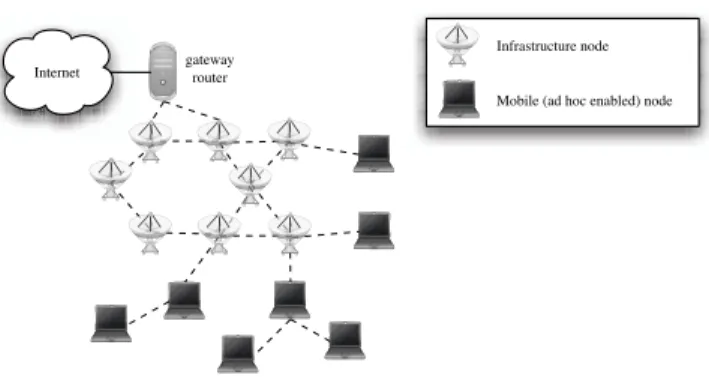
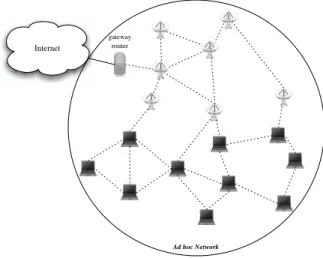
Documents relatifs
Our main idea consists in using a prediction algorithm applied to received signal strengths to estimate future values of the metrics in order to compensate the delay involved by
Reverse Path Forwarding Flooding [4] (RPF) augments the mechanism of CF by the requirement that a node may only forward a packet if the “previous hop” of the packet is on the
The algorithm can be described as follows: the source node s (which initiates the broadcasting) computes the BIP tree within its 2 -hop neighborhood, to determine which nodes
The objective of this paper is joint mission and commu- nication aware mobility control of each node, i.e., to find the location of each node by jointly considering its costs
Our main idea consists in using a prediction algorithm applied to received signal strengths to estimate future values of the metrics in order to compensate the delay involved by
We want to minimize the number of relay nodes N (D) in the grid area network D needed to support the information created by the distribution of sensor sources and received by
While in the protocol DSR with PAA, the mobility of mobile host was under the control of PAA, and further more with the appropriate setting of the length of restarted period, the
Intuitively, two locations are mobility equivalent if any of their connection probabilities, say ρ k7−→l and ρ k7−→m , are able to evolve into each other eventually with
